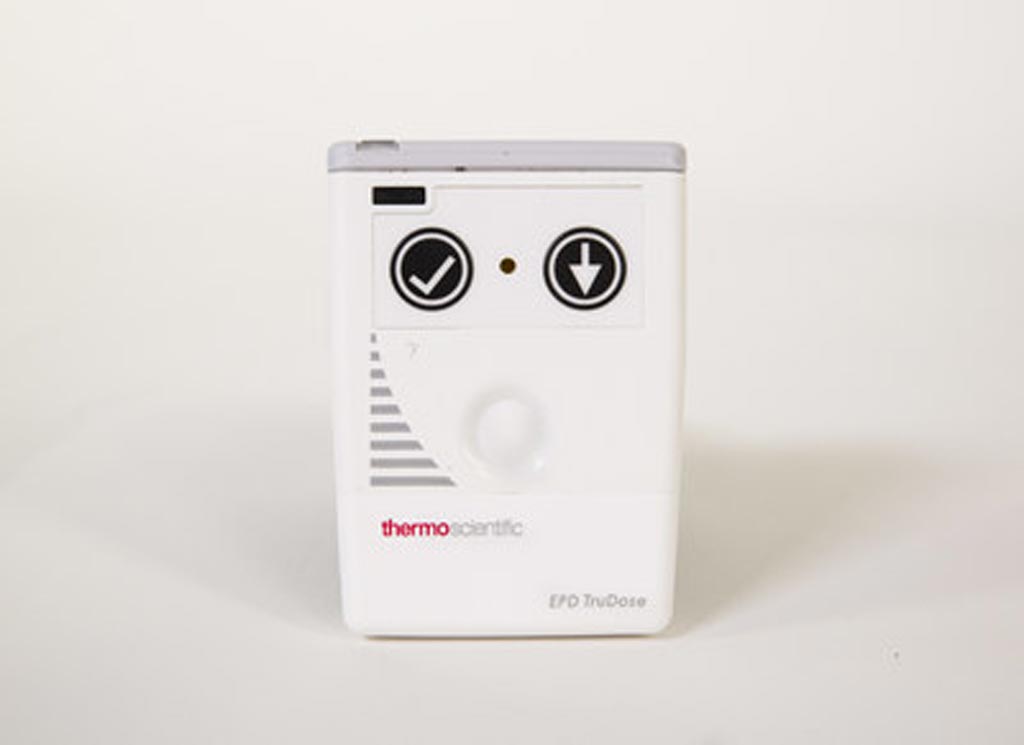Personal Dosimeter Provides Ultra-Precise Radiation Detection
By MedImaging International staff writers
Posted on 10 Aug 2018
A new personal dosimeter combines gamma and beta dosimetry with telemetry to better protect personnel at nuclear power plants, medical facilities, and other sites.Posted on 10 Aug 2018
The Thermo Fisher Scientific (Waltham, MA, USA) EPD TruDose electronic personal dosimeter (EPD) is designed to reduce the risk of radiation exposure and workplace interruption by providing real-time, clear-cut dosage information. EPD TruDose measures both gamma and beta radiation and incorporates pulsed detection technology for optimal performance in pulsed field environments. The device also integrates Bluetooth Low Energy (BLE) to connect and receive data from multiple devices at once, minimizing a facility's telemetry footprint and energy consumption.

Image: The EPD TruDose electronic personal dosimeter (Photo courtesy of Thermo Fisher Scientific).
Additional features include a range of alarm capabilities, including added warning thresholds and silent vibe alarms for covert homeland security operations; integrated high tolerance electromagnetic (EM) shielding; a compact design for easy and secure attachment to a belt, rear clip, lanyard, or shirt pocket; and optional accessories, including a desktop reader, an infrared (IR) reader, and telemetry radios. EPD TruDose can be configured using Thermo Scientific EasyEPD3 software, which reads and writes data via an infrared (IR) communications link and displays the data in a PC window.
“The EPD TruDose dosimeter gives radiation protection managers greater confidence that their team members will stay safe from harmful exposure levels,” said Julie Planchet, vice president and general manager of field and safety instruments for Thermo Fisher Scientific. “By deploying the most innovative technology available today, they can also streamline workplace efficiencies and decrease costs for radiation protection, all while enabling employees to remain focused on their jobs.”
Ionizing radiation damage to the human body is cumulative, and is related to the total dose received. Those exposed to radiation, such as radiographers, nuclear power plant workers, interventional doctors using fluoroscopy and radiotherapy, those in laboratories using radionuclides, and hazardous materials (HAZMAT) teams are required to wear dosimeters so that a record of aggregate occupational exposure can be made.














